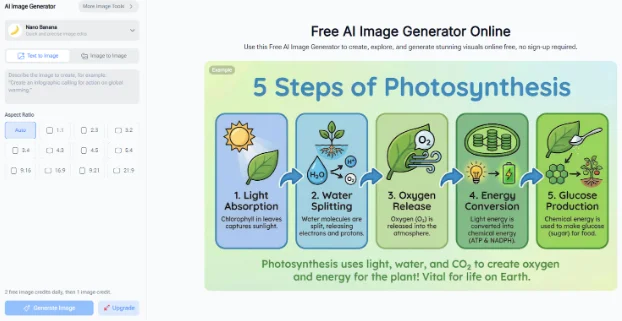
Although manual testing will always stay relevant, the demand for automated testing is increasing thanks to its benefits for companies like time efficiency and extensive coverage.
Test automation helps teams quickly track changes made to an application to reduce regression efforts.
With test data automation, enterprises can reduce test execution time, free up resources, and save money. In addition, receiving feedback about the codebase in real time can boost the efficiency of the company’s application development process.
While automating application testing is crucial for software product success, a lot can go wrong if implemented incorrectly.
When planning to automate testing, you must consider its overall architecture and develop a solid test automation strategy to produce the best possible output.
This article discusses the best practices for establishing a successful test automation suite and getting the maximum return on investment (ROI).
Determine What Test Cases to Automate
It can be exhaustive to automate all testing, with not all test case automation yielding a high return on investment.
So, it’s essential to determine the test cases that can bring the most value to your application and automate them accordingly.
It will help if you consider automating the following test cases to get the most benefit:
- Test cases that are executed repeatedly against every application build or release.
- Test cases that tend to cause human error.
- Test cases that require multiple data sets.
- Test cases that assess the application’s performance.
- Test cases that run on multiple platforms and browsers.
- Frequently used functionality that can introduce high-risk conditions.
- Test cases that take a lot of time and effort when performed manually.
Pick the Right Automated Testing Tool and Framework
You should select the right automated testing tool and framework based on your application. For instance, Cypress, Playwright, or Selenium are perfect tools to build end-to-end test automation suites to develop web applications.
On the other hand, Espresso or Appium are ideal for testing mobile applications. Before selecting any automated testing tool, you should check the shortlisted tools’ features, community support, maintenance status, and functionalities.
- Team Fit: Another crucial consideration for effective test environment management is the team’s expertise and experiences. It mainly applies to the frameworks and languages the test automation tools use. For instance, some popular test automation tools use Java, Python, C#, and Ruby programming languages. If your team is specialised in Java and Python, consider using Selenium.
- Open source vs. commercial: Your organisation’s budget is another vital consideration that will help you choose between an open-source or commercial testing tool. Both these types of testing tools have their pros and cons. While commercial testing tools are famous for providing more advanced features, reliability, and technical support, an open-source testing tool can also facilitate frequent releases and rich features.
Divide Your Automated Testing Efforts
Assigning all tasks related to test automation to a single team member can result in a considerable loss. Instead, you should divide these tasks among team members based on their skills and expertise.
For instance, determine the team members with relevant programming skills and experience and assign them the responsibility of creating test scripts.
You can ask other team members experienced in managing testing user workflows to handle test case creation and test data generation for test scripts.
By dividing your automated testing effort, you can promote collective ownership of tests, and it will help encourage collaboration, improve efficiency, and mitigate dependency on a single team member.
Set up a Testing Environment
Setting up the test environment is another crucial step to make your test data automation effort successful. This step involves implementing strategies for executing tests, generating reports, and storing data.
Moreover, a test environment includes hardware, software, and network configurations that can help support executing the automated tests. Setting up your test environment similar to production one is recommended to identify any configuration-specific issues,
Consider following the below discussed suggestions when setting up your testing environment:
- Make sure to set up the hardware and network configurations properly.
- Organise and create your test data so that it’s available when executing tests.
- When using production data, mask it to hide sensitive information.
- After setting up the test environment, perform a smoke test to validate its build stability.
- When using on-premises infrastructure to run tests, consider investing some effort in maintenance.
Create Good, Quality Test Data
A set of input data is handy for good data-driven tests. You should carefully plan and generate meaningful test data for successful test automation. When creating test data, consider following these tips:
- Test data should be accurate and mimic real-life scenarios.
- Test data, like ‘ abc’ for an individual’s age, should trigger errors.
- Test data should cover boundary conditions.
- Test data should cover exceptions.
Furthermore, you should store the test data in external files like XML, JSON, CSV, or XLSX, as they facilitate extensibility, maintainability, and reusability. Design your test automation framework in such a way that it makes it easier to parse the test data and iterate its content.
Develop Automated Tests that are Resistant to Changes in the UI
Always remember that end-to-end test data automation depends on the user interface of your software product.
The core of such tests is to locate the web elements on a specific page and perform relevant actions. It’s crucial to create robust tests that remain unaffected when your software’s user interface changes in the initial stages of development. Otherwise, your tests might probably fail.
It will be best to incorporate design patterns like the Page Object Model (POM) when designing a test automation framework to minimise code duplication and code updates as you introduce changes in the application.
Developing atomic and autonomous end-to-end tests is crucial to receiving reliable results.
Final Words
Test automation is crucial to an effective test environment management strategy and building and releasing a quality application.
You should know that every successful project needs a solid plan, and automating testing is no exception.
By following the above-discussed practices, you can correctly establish test automation, further resulting in faster test execution, greater test coverage, and increased accuracy.
A pro tip you should remember is to start planning for test automation as early as possible to eliminate bottlenecks and optimise resource allocation.

The Connection Between Accounting Firms And Regulatory Compliance

Why Smart Startups Choose Custom AI Business Solutions Today

How to Optimize Business Operations with Vending Machines in Australia

The Digital Lifeline: How Technology is Revolutionizing Addiction Recovery

From Clicks to Clients: Why Trust-First Local SEO Wins the Long Game

Forgot Your iPhone Password? Here’s How to Unlock It Easily

How Strikes and Step Through Bikes Are Using Tech for Better Range

NoteGPT AI Image Generator: Transforming Branding and Marketing








